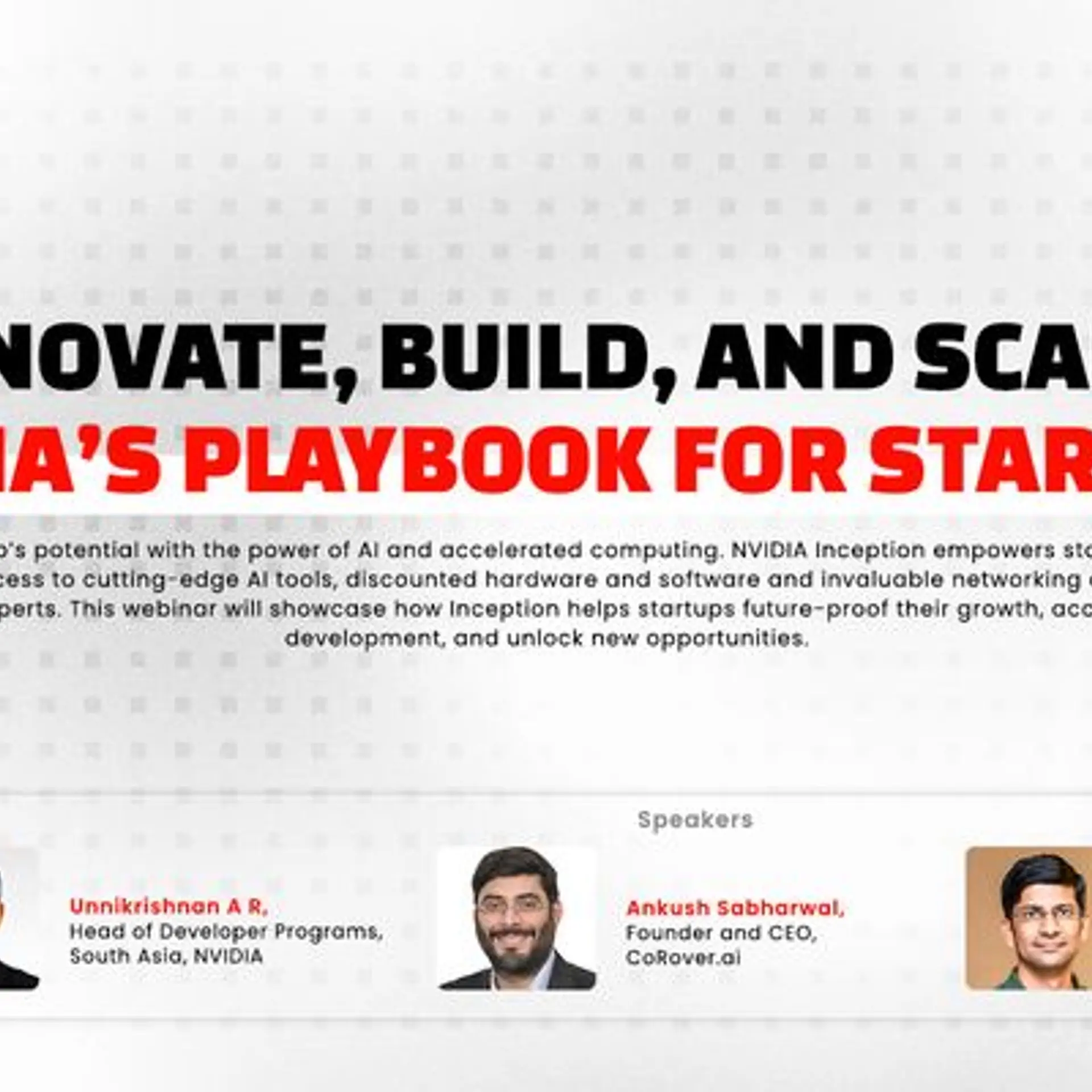Success factors for scaling up: what these 8 organisations teach us about problem-spotting, talent and innovation
This book chronicles the stories of organisations impacting change at scale in India, along with a framework of seven success factors.
Launched in 2012, YourStory's Book Review section features over 270 titles on creativity, innovation, entrepreneurship, and digital transformation. See also our related columns The Turning Point, Techie Tuesdays, and Storybites.
Mumbai-based business journalist Nikhil Inamdar’s new book is 7 Sutras of Innovation - Stories of Scale-ups that are Transforming India. His earlier book was How Baniyas Do Business.
The new book is based on stories of eight winners of the Marico Innovation Foundation’s biannual innovation awards. See YourStory’s write-up on the 2020 award winners, and interview with Marico Chairman Harsh Mariwala.
The featured winners span the business, education, non-profit, and government sectors: Rivigo, Goonj, Forus Health, Agastya International Foundation, Tonbo Imaging, ISRO, The Better India, and St. Jude’s.
“Scaling up requires a rigorous, execution-related mindset such as an ability to juggle multiple balls at one go, but not all inventors are necessarily great entrepreneurs, which is why not all great ideas translate into great companies,” Harsh Mariwala explains in the foreword.
MIF’s motto – Inspire, Impact and Involve – helps fuel innovation in India by connecting “mind to the marketplace” via mentorship and networking. Scale and sustainability are key for impact, and entrepreneurship must be brought to the core of education, according to Dr RA Mashelkar, writing in the book’s preface.
Here are my key takeaways from this 265-page book, which makes for a straightforward and informative read for aspiring entrepreneurs. The author draws largely on news reports as reference sources, and does not mention any of the numerous books published on entrepreneurship; five chapters have no cited references at all.
See my reviews of the related books Funding your Startup, Shine Bright, Indian Innovators, A World of Three Zeroes, and Social Entrepreneurship in India.
Foundations of scale
The author has come up with seven success factors (‘sutras’) of scale-ups: find a gap in the market and a market in the gap; flexible approach; customer-centricity; capital consciousness; hiring passion over pedigree; culture of innovation; and amplification of vision. Not all of the eight featured organisations, however, meet these seven factors; some fall short but have still scaled up.
It takes a vision to spot the market gap, which can happen by chance or through research. Timing is critical, otherwise, the launch can be too early. The mission must be fixed but the choice of the path can be flexible. The vision should be expanded through diversification, expansion to new markets, and use of technology.
There should be a strong connect to customers by frontline employees. A frugal mindset helps deal with constraints and turns them into opportunity. People should be hired for their attitude to learn and passion for the problem, not just for degrees.
An innovative culture has space for ideation and experimentation, resilience towards failure, encouragement of diversity, and an open-door policy rather than a hierarchy.
Each of the organisational profiles begins with the founder story, and journey of the company from product to scale. The second half of the chapter analyses the strengths of the scale-up through the ‘seven sutras’ framework.
Rivigo
Deepak Garg, an IIT-IIM alumnus and McKinsey consultant, spotted a business opportunity in India’s logistics sector in 2014. But instead of focusing only on tech-enabling business processes, he dug deeper into another problem: the plight of the truck drivers and the hardships they faced with tough working conditions and constrained family time.
Rivigo was launched with a relay-and-pitstop model so that drivers could return home the same day, while also improving truck utilisation time and reducing route time. “Deep faith and a fair bit of madness” helped in the startup’s journey to “make logistics humane”.
A fortunate encounter with Singapore Post led them to onboard as an investor. Ecommerce vendors signed on as clients, and a separate marketplace for freight providers in non-relay mode was also launched.
The company invests heavily in digital technology, optimisation software, and automation algorithms. Employees are encouraged to be transparent, push as well as help each other, and learn from failure.
Their future plans include moving from an asset-heavy model to a relay-as-a-service platform. Their story shows the importance of first-principles thinking, carefully-crafted operational culture, and bias for action, according to the author.
Goonj
Goonj was founded in 1999 by Delhi-based communications professional Anshu Gupta. Moved by the plight of poor communities in disaster-struck areas who needed clothes, he began by collecting unwanted clothes from urban residents, reprocessing them, and distributing them to needy rural communities.
The organisation now connects urban surplus to the rural deficit on a national scale, provides disaster relief, and gives dignity to rural communities. It engages them in local development projects of their own choice, for which they are compensated with clothing products – thus creating multiplier effects for its operating model.
The award-winning organisation works with a network of local partners in a symbiotic relationship. This helps understand emerging needs and expand into new segments, such as affordable products for menstrual hygiene. Regional heads also meet quarterly to share learnings.
There is a strong focus on combining and upcycling products, eg. making quilts from rags, bags from clothes. The founder now wants to create a movement by encouraging others to build on and replicate this model.
Forus Health
K Chandrasekhar and Shyam Vasudeva Rao left Philips Healthcare to develop affordable solutions for detecting preventable blindness. India has a third of the world’s blind population, but only 20,000 eye specialists for 1.3 billion people, according to cited data. Around 80 percent of blindness cases are actually preventable.
Forus Health’s affordable, convenient, and portable technology solutions (3Nethra) were validated and used by Aravind Eye Hospital, whose founder was the source of inspiration as well. The optics solutions are also cloud-enabled, thus opening up the platform data for real-time AI applications and predictions.
The company’s solutions are more patient-centric than doctor-centric. With a mission to eradicate blindness, the product portfolio was expanded to offer solutions for screening eyes of babies, and to new markets in 34 countries. Subscription models are available for those running eye camps.
Agastya International Foundation
Ramji Raghavan left a corporate banking career in New York to pursue the cause of making Indian children “curious, creative and confident.” Inspired by his Rishi Valley School experiences, he decided to focus on bringing “hands-on science” to government schools.
Founded in 1999 in Bengaluru, Agastya’s vision is aptly captured in the mantra Ah, Aha, Ha-ha (awakening, understanding, delight). Rather than disrupting the existing education system, Agastya’s model is to provide supplementary resources and training to needy government schools.
The talent for creating experiential science models and interactions is roped in from innovators outside the education system as well, with support from an advisory board. Employees are encouraged to come up with ideas and pilots of their own, many of which have gone on to become successes, such as science and innovation fairs.
During times of financial hardship for the central campus-based model, the company successfully branched out with mobile education vans and motorbikes. Its Young Instructor Leaders programme teaches talented students to teach other students, drawing on the suggestion by a resourceful student.
Agastya has raised funds from angels, entrepreneurs, and HNIs like Rakesh Jhunjhunwala, and also acquired campus land in Kuppam from the Andhra Pradesh government. Metrics include ‘cost per exposure’ for children and teachers to the organisation’s labs and training programmes.
Future plans include expanding to colleges, strengthening the digital component, and exploring art and design thinking (not just science) to foster hands-on creativity. Ultimately, the organisation aims to scale and become a movement.
Tonbo Imaging
Arvind Lakshmikumar leveraged his electronics background and defence sub-contractor experience in the US to venture into the military surveillance solutions market. Founded in Bengaluru in 2008, Tonbo (which means dragonfly in Japanese) used vision models borrowed from nature, and designed products with off-the-shelf consumer electronics.
This helped to keep costs low but quality high. International sales to clients like the Peruvian Army helped build credibility and visibility, and he successfully penetrated the Indian defence market.
He raised funds from Mumbai Angels Network and Silicon Valley’s Artiman Ventures. The organisational culture is flat, and people are hired for their ‘can do’ attitude. The workforce is globally distributed, and receives competitive salaries and generous stock options.
The company may expand to manufacturing heavier military platforms, but this could be a risky option, according to the author.
The Better India
Husband-and-wife duo Dhimant and Anuradha Parekh had a background in engineering, but spotted an opportunity in the Indian media market. Dissatisfied with the excessive negativity and pessimism in mainstream news media that feeds off problems and fear, they decided to focus only on messages of positivity and change.
The appeal – and operating model – of this idea was validated many times over on their weekend blog of positive stories. Bengaluru-based The Better India was launched in 2008. Despite scepticism from others about monetising positive news, they persisted stubbornly to make this a viable entity, and crowdsourced content from social sector organisations.
Their stories ended with a call to action, thus moving the audience from applauding to action, from information to inspiration. Many readers made donations based on these “solutions journalism” stories, or improved environmental conservation efforts, or gave jobs to the disabled.
Partner campaigns were devised to bring businesses on board as sponsors, but without coming across as corporate PR. The impact content platform has experimented with a range of digital media options, such as mobile content, syndication, and WhatsApp distribution.
St. Jude’s
St. Jude’s provides recovery shelter and services for poor children after their cancer operations. Children receive free stay, food and education in a clean environment, and their parents also get training in skilling. This has improved post-operation recovery rates.
St. Jude’s (named after the patron saint of desperate causes) was founded in Mumbai in 2005 by Nikhil Kaviratne after retirement from Unilever Indonesia. With the mantra of ‘Thing Big, Start Small, Move Fast,’ there are now 35 facilities in seven cities.
Costs are kept low by giving volunteers the leadership roles, and full-time staff run the show. Staff are well-paid (inspired by the Singapore model of paying public servants high salaries).
The founder’s corporate influence shows in the adherence to quality, process, codes of conduct, and standardised look and feel (though with some variance for food preferences in different cities).
ISRO
The Indian Space Research Organisation (ISRO) has outperformed many other Indian government agencies. In addition to applications like agricultural monitoring and weather alerts, it has launched high-profile space missions.
It has a higher sense of purpose, and its successes are based on frugal modular design, standardisation, industry collaboration, open internal reviews, and continuity across leaders. One of its axioms is ‘Share the credit but not the blame’ – the chairman takes full responsibility for failures.
Successes include Mars Orbiter Mission (utilising a clever gravitational ‘slingshot’), and building cryogenic engines without international support. A moon lander mission is planned next.
In sum, the book brings together learnings from a diverse set of organisations to illustrate the power of innovative thinking and resilience in bringing about impact at scale. The cross-sectoral focus is a welcome change from other books that tend to focus only on specific industries.
Edited by Kanishk Singh



![[The Turning Point] How lack of awareness about the solar market led these brothers to start Loom Solar](https://images.yourstory.com/cs/2/79900dd0d91311e8a16045a90309d734/turningpoint2-1601622989968.png?fm=png&auto=format&h=100&w=100&crop=entropy&fit=crop)

![[The Turning Point] How a conversation with a farmer led these IIT graduates to start Vernacular.ai](https://images.yourstory.com/cs/2/3fb20ae02dc911e9af58c17e6cc3d915/Imagebni6-1598604545655.jpg?fm=png&auto=format&h=100&w=100&crop=entropy&fit=crop)





